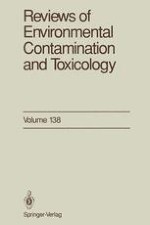1994 | OriginalPaper | Chapter
Glufosinate (Phosphinothricin), A Natural Amino Acid with Unexpected Herbicidal Properties
Author : Gerhard Hoerlein
Published in: Reviews of Environmental Contamination and Toxicology
Publisher: Springer New York
Included in: Professional Book Archive
Activate our intelligent search to find suitable subject content or patents.
Select sections of text to find matching patents with Artificial Intelligence. powered by
Select sections of text to find additional relevant content using AI-assisted search. powered by
In addition to the large number of phosphates formed under natural conditions, such as the nucleotides and phospholipids, the world of living organisms also presents a small group of phosphonic acids, the structure of which was first brought to light during the last 20 years or so. One of the first compounds from this series was 1,2-epoxipropanephosphonic acid, which was isolated from protozoa in 1969 and is known by the trivial name fosfomycin (1) (Christensen et al. 1969; Hendlin et al. 1969). Other examples are plumbemycin (2) (Park et al. 1977), isolated in 1976 from cultured filtrates of Streptomyces plumbeus, and fosmidomycin (3) (Kuroda et al. 1980), isolated from Streptomyces lavendulae. All three of these have an antibiotic effect (Fig. 1). Natural substances containing a phosphinic acid moiety in which the phosphorus atom is bound to two carbon atoms were unknown 20 years ago.
